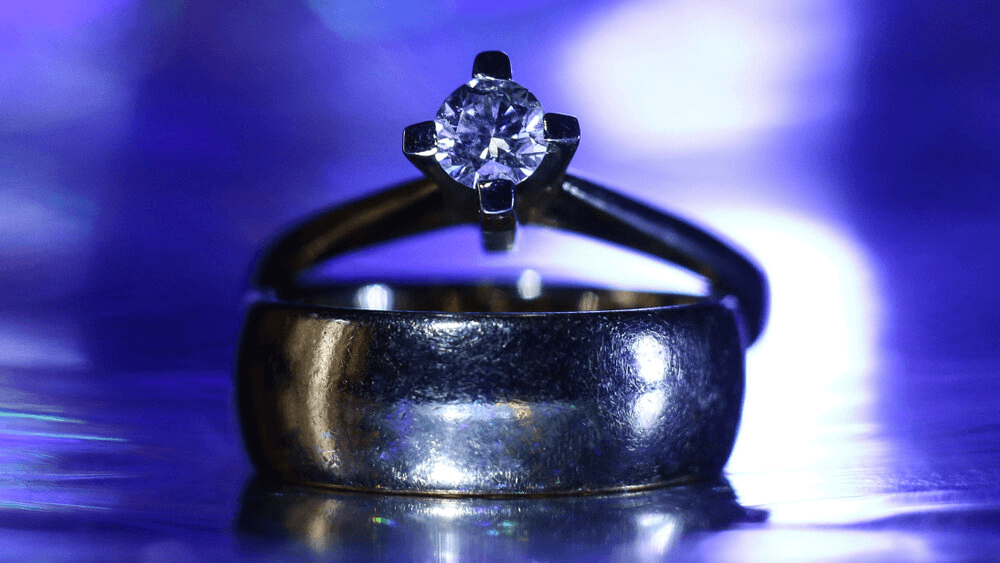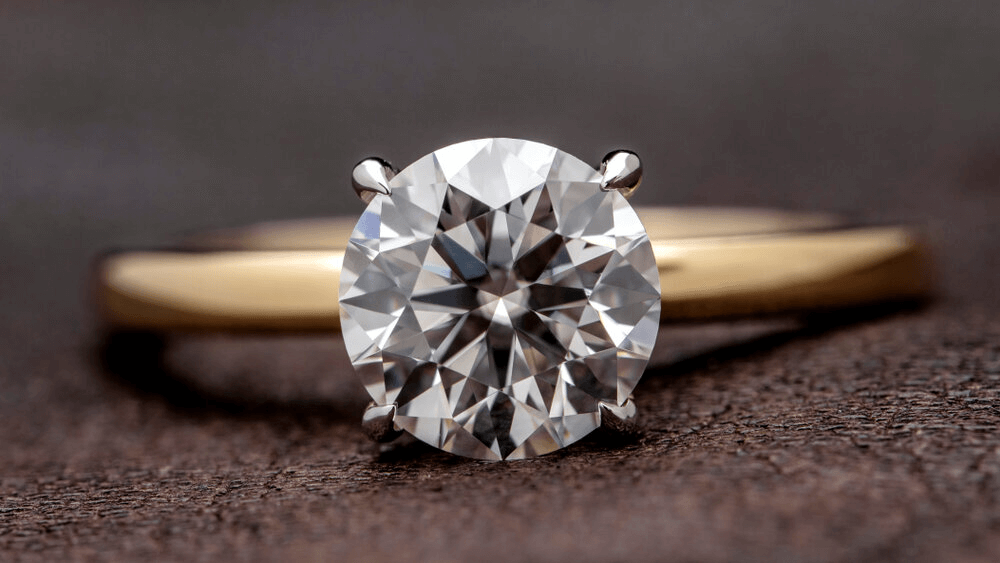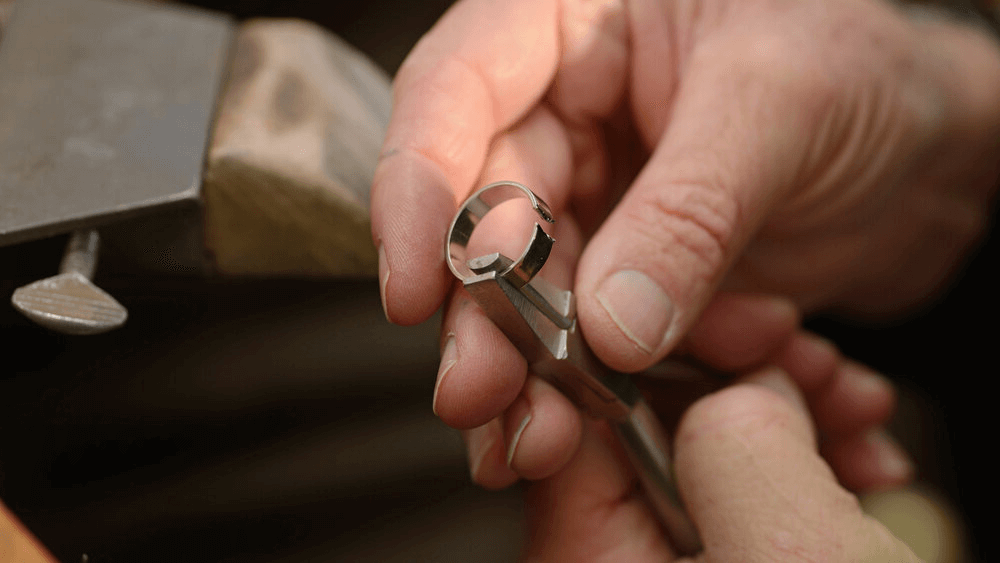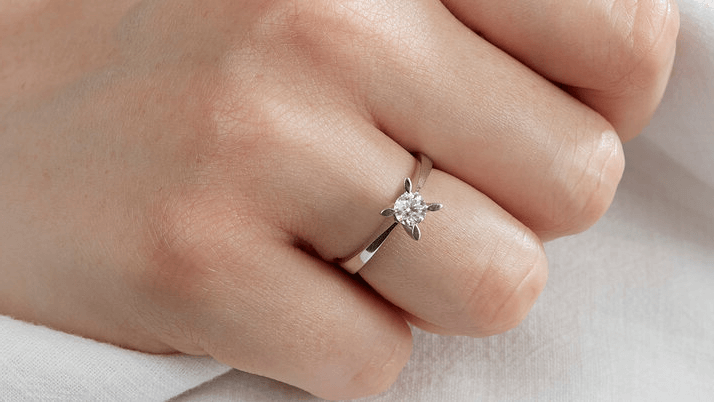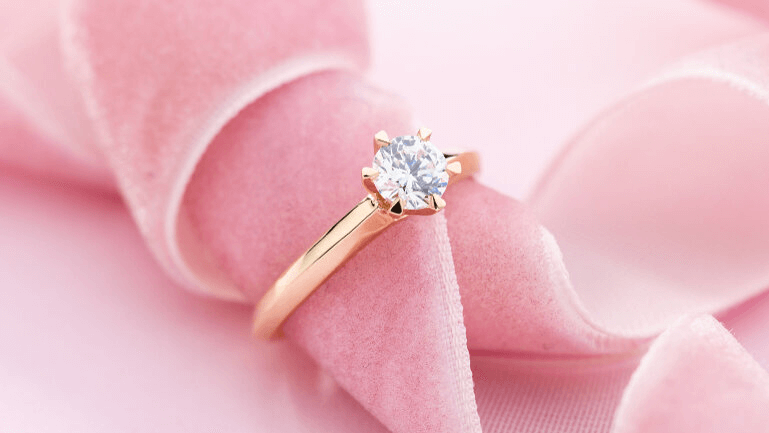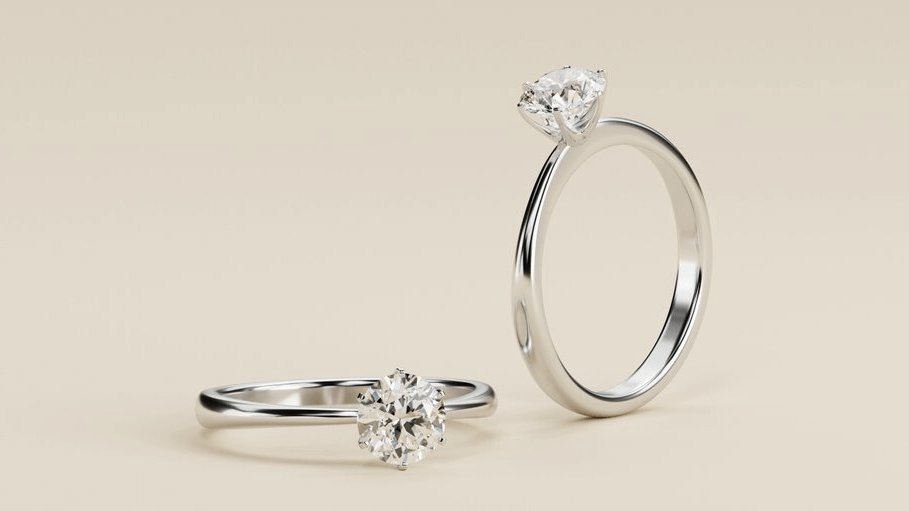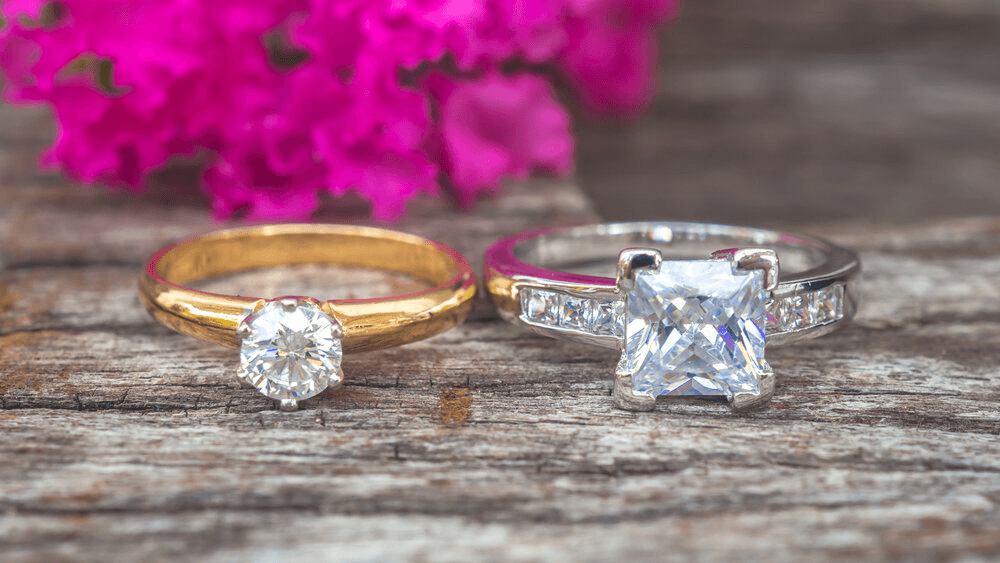Engagement Ring Metals: Avoid These Common Mistakes

By Gary A.

Edited by Olivia H.
Published Aug 17, 2021
Edited on Dec 18, 2024
When it comes to choosing the best metal for your ring, balancing durability, style, and long-term beauty is essential to create a piece that stands the test of time.

Navigate This Guide:
- 7 Quick Tips for Choosing the Best Metal for Your Diamond Engagement Ring
- Introduction
- Metals and Allergies
- Gold: A TImeless Symbol of Love
- Platinum: The Premium, Hypoallergenic Choice
- Cost-Benefit Analysis: Platinum vs. Gold
- Emerging Metal Trends: Tungsten and Titanium
- Fashion Meets Function: Blending Metals
- Our Expert Take
- 10 FAQs
Before we dive deeper into the specifics, here are some practical tips to help guide your decision-making process:
7 Quick Tips for Choosing the Best Metal for Your Diamond Engagement Ring
Selecting the right metal for your engagement ring is as crucial as the diamond itself. The metal not only defines the ring’s overall appearance but also its durability and longevity. Here are essential tips to keep in mind when deciding on the best metal for your engagement ring:
- Tip 1:Understand the Symbolism and Personal Significance: Each metal carries its own symbolism and cultural significance. For instance, gold is traditionally seen as a symbol of purity and is a classic choice. Understanding what each metal represents can add a personal touch and deeper meaning to your engagement ring.
- Tip 2:Consider the Durability of the Metal: If you lead an active lifestyle, consider metals known for their durability. Platinum and tungsten are excellent choices for their strength and ability to withstand daily wear and tear. This is essential to ensure that your ring lasts a lifetime without losing its shape or shine.
- Tip 3:Match the Metal to the Diamond’s Color Grade: The metal color can enhance or detract from the diamond’s appearance. For instance, a high-color grade diamond (D-F) looks stunning in white gold or platinum settings, which highlight its brilliance. Lower color grades (G-I) may be better suited to warmer metals like yellow or rose gold.
- Tip 4:Assess the Hypoallergenic Properties: If you or your partner have sensitive skin, choosing a hypoallergenic metal like platinum or high-karat gold is crucial. These metals are less likely to cause allergic reactions, ensuring comfort in daily wear.
- Tip 5:Factor in the Maintenance Requirements: Different metals require varying levels of care. Platinum, for example, develops a patina over time and may require periodic polishing. Gold, on the other hand, is easier to maintain but may need re-plating if it’s white gold. Understanding the maintenance can help you choose a metal that fits your lifestyle.
- Tip 6:Consider the Long-Term Aesthetics: Think about how the metal will age over time. While all metals will show signs of wear, some, like platinum, age gracefully and even develop a desirable patina. Others may require more upkeep to maintain their original luster.
- Tip 7:Reflect on the Overall Style and Design: The metal you choose should complement the style of the ring. For a more traditional or vintage look, gold is a timeless choice. For a modern or minimalist design, platinum or white gold can offer a sleek and contemporary appearance.
Now that you’ve got these practical tips, use Jeweler AI below to find the perfect engagement ring that suits your style and budget:
Introduction
Choosing a wedding ring is pretty much the polar opposite of choosing an engagement ring.
For starters, you’re probably approaching this next step as a team, and away from the pressures of choosing that perfect diamond – not to mention planning a winning proposal behind her back.
What’s more, wedding rings are almost always the simpler of the two pieces. Whether you opt for a plain band of gold, or a simple channel setting of coordinating diamonds – or something entirely different – there are likely to be fewer factors to consider.
What does this mean for you? Other than a simpler time choosing, it means that your choice of metal will probably sit front and center in your mind. From durability to color, shine, and cost, picking the right metal (or metals) for your wedding rings is a whole different can of worms.
Metals and Allergies
The purer the metal, the better it is for those who have sensitive skin or allergies to certain metals, and platinum jewelry features 95% pure platinum.
Unfortunately, a lower karat gold means a greater likelihood of irritation or allergic reaction, since it will have been combined with metals like nickel, copper, and zinc. Avoid both rose and white gold for this reason.
18 karat gold is your best bet if you really can’t pass up this precious metal, or you might choose to accent a platinum band with a gold accent, to incorporate that distinctive yellow color without risking your skin.
On the other hand, the tough and masculine tungsten is also hypoallergenic, even if it has been alloyed with nickel!
Gold: A Timeless Symbol of Love
The unrivaled warm shine of yellow gold means that it has been coveted throughout history, and worn on the ring fingers of endless couples over hundreds of years.
Whether you consider yourself a romantic at heart and enjoy the timeless strength and beauty of gold, or simply like the lustrous warm hue and prestige of a high karat gold ring, choosing to follow tradition and embrace this precious metal will never go out of style.
Still, the years see us breaking from more and more traditions and creating our own ways of doing things, gold has become one choice among many.
For any bride or groom, the choice comes down to personal preference – and, of course, the relatively new idea that, really, there are no real rules to follow.
The Allure of Yellow, White, and Rose Gold
Yellow and rose gold have beautiful, warm tones that compliment any wearer. They appear classic and traditional – yellow gold more so than rose, but the romantic hues give it its own sort of vintage charm.
White gold is different. It looks almost identical to platinum when crafted into a piece of jewelry, but it’s much more cost effective. It also looks incredible alongside a bright white diamond.
Believe it or not, rose gold rose was first featured in a Fabergé Egg in the 1800s but, much more recently, it has become a wildly popular choice in fine jewelry.
The exact color of rose gold can range from a subtle blush to a deep and rosy pink, depending on the quantities of copper and other alloys used within it. Since the copper will never be lost from the ring, it will never return to yellow gold, but the copper will react with oxygen and deepen the red color of the ring.
This will take many, many years – and many wearers take pride in that deep color, which cannot be imitated in new rings and, as a result, comes to represent many years of marriage.
Platinum: The Premium, Hypoallergenic Choice
Platinum is a lot rarer than gold, but it’s got an incredible shine that makes it a real winner when it comes to complementing a diamond.
Platinum’s Durability and Allergy-Free Qualitie
Platinum is incredibly strong, and more than capable of withstanding many decades on your finger. Still, gold – and particularly white or rose gold – remains a solid choice (literally) for anyone looking to wear those warmer hues without taking on countless knocks and scrapes over the years.
One of the reasons platinum has grown so popular recently is down to its durability – a quality that extends to its incredibly bright white sheen, which can be easily restored by a jeweler if the years begin to dull its luster.
But, as we mentioned above, gold is alloyed with stronger metals. This is what determines its karat, with one karat equaling 1/24th of the ring. So, 24 karats is another way of saying ‘pure gold’, while 18 karats simply means that the ring is 18 parts gold to 6 parts nickel, copper, silver or any other alloy used.
Why does this matter? Because, to a certain extent, a gold’s karat determines its strength. A 14 karat gold will generally be stronger than an 18 karat gold.
This is why rose gold, an alloy of gold, copper, and silver, is naturally stronger than yellow gold. Copper is a hard, durable metal, and lends those qualities – alone with a pink hue – to the gold it is alloyed with.
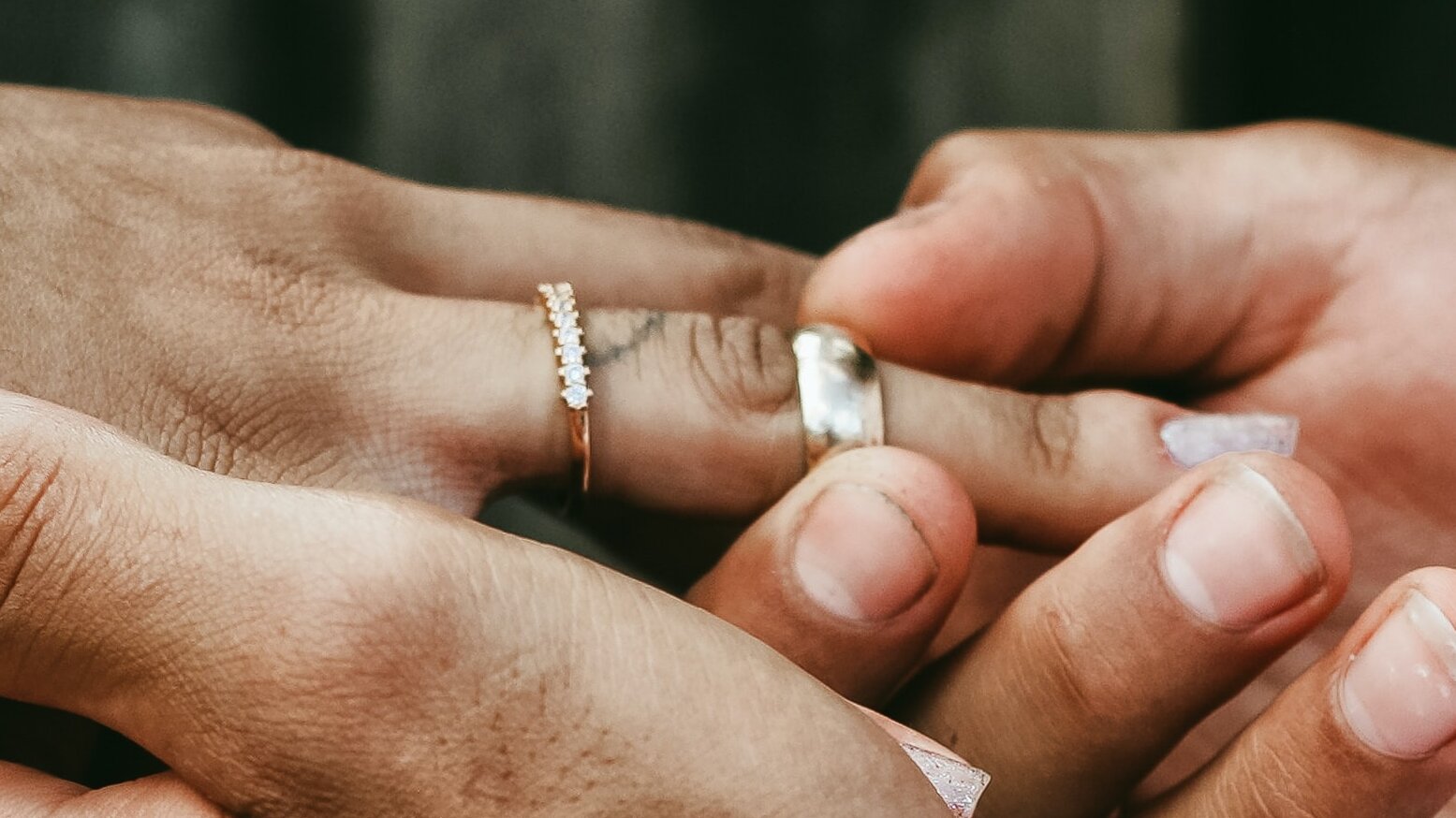
Cost-Benefit Analysis: Platinum vs. Gold
A platinum ring will cost more than an equivalent ring made of gold, although this can be confusing to some shoppers, as gold is the expensive metal, costing approximately $1,300 per ounce vs $1,055 per ounce.
Why? Because pure gold can’t be used in jewelry – it’s too soft and, even in the most expensive rings, needs to be combined with other strengthening metals to prevent it warping, denting, or scratching as soon as it is placed on the finger. In other words, gold jewelry is an alloy, because it isn’t pure.
Platinum is naturally strong enough as a pure metal, rather than an alloy, so a wedding band can easily be cast from 95%+ platinum. So, even though gold is more expensive, less gold is used to cast a wedding band, which means that platinum rings are the pricier choice.
Palladium, a rare metal with a slightly darker hue than platinum, is also an expensive choice, although we wouldn’t recommend it over platinum. Not only is it much rarer, but it’s harder to work with – meaning many jewelers try to avoid these rings – so the extra cost for this pretty unique metal doesn’t seem worthwhile.
Emerging Metal Trends: Tungsten and Titanium
In recent years, tungsten has also become a popular choice for wedding rings – particularly among grooms, who prefer the more understated grays and blacks this metal can provide. This metal is incredibly tough, too, so great if you work with your hands, but that does mean resizing is impossible, so think carefully before committing to this metal – and, obviously, get your finger measured by your jeweler.
Titanium is also very popular these days, particularly among men, because it can be used to create strong and bold rings ranging in color from silver to black. It’s also relatively inexpensive compared with other options, although you’ll need to accept the fact that it has a matte finish – not a bright, luxurious sheen.
Fashion Meets Function: Blending Metals
Different metals, or a combination of white and rose gold or yellow gold and platinum, creates a bold and luxurious statement that many modern brides and grooms are choosing to make.
Take, for instance, the mixed metal engagement rings taking the jewelry world by storm. Jewelers are now intentionally combining two or more contrasting metals, rather than restricting themselves to white or gold, warm or cool, pink, or yellow – and the results are seriously impactful.
Mixing Metals for Personal Style
If you’ve already embraced this new style in your engagement ring, then you’ve likely already realized that the world (or, in this case, the jewelry store) is your oyster when it comes to picking a metal for your wedding band.
If your engagement ring is more traditional, however, it’s worth remembering that there’s no obligation to follow the same theme for your wedding band. That old ‘gold or silver’ rule is fading into the distance – now, it’s all about what you want to see on your finger every morning when you wake up.
Our Expert Take
In our opinion, either gold or platinum is the best choice for most brides and grooms.
These two precious metals are highly versatile, and offer a shine and color none of the other options can replicate exactly.
Our number one recommendation? Seeing these rings in person. Use our jewelry store locator to find a reputable establishment in your area, book a consultation, and experience these metals – their shine, weight, and how they feel on your finger – in order to make a person choice that will stay with you for the rest of your life.
10 FAQs
Frequently Asked Questions About Choosing the Best Metal for Engagement Rings
- Q: What is the most durable metal for engagement rings?
- A: Platinum is known for its exceptional durability and strength, making it an ideal choice for engagement rings that are worn daily.
- Q: Are there hypoallergenic options for engagement ring metals?
- A: Yes, platinum and high-karat gold (like 18K or 22K) are hypoallergenic and great options for those with sensitive skin.
- Q: Can the metal color of an engagement ring affect the appearance of the diamond?
- A: Absolutely. White metals like platinum and white gold enhance the brilliance of high-color grade diamonds, while yellow gold can complement lower color grade diamonds.
- Q: How often does a white gold ring need to be re-plated?
- A: Typically, a white gold ring may need re-plating every 1 to 3 years, depending on wear and care.
- Q: Is rose gold a good choice for engagement rings?
- A: Rose gold is not only durable but also offers a unique and vintage appeal, making it a beautiful and popular choice for engagement rings.
- Q: Does platinum scratch easily?
- A: Platinum is durable but can develop a patina from scratches over time. However, these scratches don’t necessarily damage the metal and can add character.
- Q: What is the best metal for an engagement ring if I’m on a budget?
- A: Sterling silver is a budget-friendly option, but for more durability at a reasonable price, consider 14K gold or palladium.
- Q: Can I mix different metals in an engagement ring?
- A: Yes, mixing metals like white and rose gold can create a unique, personalized look and is a trending choice in engagement ring designs.
- Q: Is tungsten suitable for engagement rings?
- A: Tungsten is extremely durable and scratch-resistant, making it suitable for engagement rings, especially for those who prefer a more modern and less traditional material.
- Q: How do I choose the right metal for my engagement ring?
- A: Consider factors like lifestyle, skin sensitivity, maintenance, budget, and personal style preferences. It’s also helpful to try on rings in different metals to see what looks and feels best on your hand.
Craft Your Love Legacy with Jeweler AI – Find the Best Metal for Your Wedding Ring!
FOLLOW-UP GUIDE SERIES

